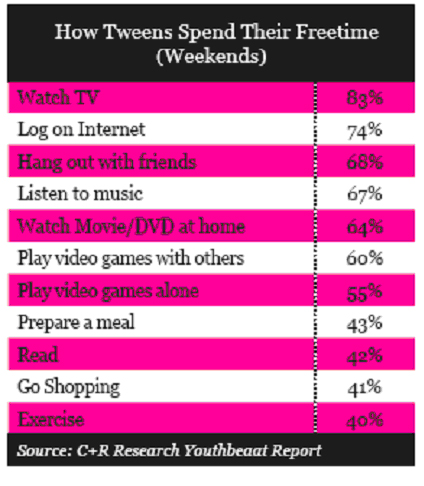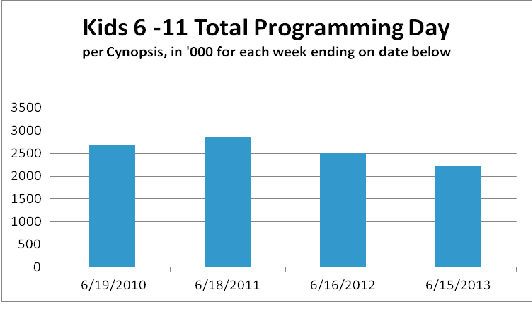
April 9, 2025

July 2013 | Vol. XII - No. 7
Tweens and Toys
There are basically three "toy" stages – Baby, Preschool and Tween. Teenagers, while a fourth category, have become much less important as toy consumers and are now much more a factor in consumer electronics. This article will focus on the Tween category – arguably the most important of the three.
Experience tells us that when children reach their Tween years (8–12 years old), they begin to develop unique social needs and desires, and reveal distinctive hopes, dreams, and expectations for the future. Most notably in this age group, physical changes brought on by the onset of puberty are accompanied by emotional changes.
Tweens begin to develop their own sense of self and seek out information from parents, the media, the Internet, and peers that will help them further define themselves. They are beginning to identify their own interests and express themselves through their activities and the first adult interests start to emerge, such as playing sports, playing musical instruments, buying toys, cooking, sewing, using computers, etc.
At the same time, Tween self-esteem is in development and is fragile at best, and this often results in rebellious behaviour and a rejection of the values held up to that point. As such, Tweens are highly affected by peers and face pressures and worries that are often focused on how they will fit in and interact with others in society. As a consequence, they will question the "rightness" of the things they had bought earlier and will often change direction in terms of their product preferences.
Mattel found out the hard way just how contrary Tweens can be. The company had reigned supreme in the fashion doll field since time immemorial – they had between Barbie and Disney Princess something like an 80% market share. Then, in 2004 an upstart, MGA Entertainment, determined that there was an opening for a doll that was not quite as nice and wholesome as Barbie or Princess. They created a new doll – Bratz.
Within a year, it was adopted wholesale by the Tweens as an alternative to Barbie or Princess, the two dolls that were totally identified with the older generations such as their mothers and other oldies. At its peak, Bratz was bought by nearly three-quarters of the Tween girl population. Mattel eventually hit back by creating Monster High, a doll that epitomized everything Bratz stood for, and the Tweens again went completely for it.
Another example is the Skylanders, Activision’s marriage of video games and action figures. This, too, was and continues to be an astounding success story simply because it took the Tween population, both boys and girls, by storm. Today, Skylanders are arguably the #1 toy bought by Tweens.
Lego’s astounding success is, too, due to the fact that the company focuses laser-like on the Tween population – for boys with their action figure licenses and for girls with their recently launched Lego Friends programs.
All of Lego’s advertising and other communication tools are tailored to this age group and this has not only given them an 80% market share in the Building toy category, but also is propelling the entire category on a very sharp growth path.
When you talk to the toy buyers for virtually any category, they will sooner or later tell you about their successes in targeting the Tween group. The reason for this is that these same buyers believe that the Tweens are responsible for more than half of all the toys bought in the United States.
And there are good reasons for this sharpened focus. There are about some twenty million Tweens in the U.S. alone. White non-Hispanics continue to be the majority of this group with something like 45% of the total. Hispanics are the second group with around 12% but are expected to grow to nearly 20% by end of this decade.
Tweens are financial powerhouses. They are responsible for about $200 billion in spending on clothes, cosmetics, accessories, toys, consumer electronics, etc. – 20% spent by them themselves, 80% spent by their parents on them. Most of the decisions surrounding this 80% are taken jointly, so Tweens are the real decision makers for the totality.
In addition, Tweens are not only a primary and an influencer market, they are also a future market in that they tend to be extremely brand conscious and brand loyal. Once they have decided that a given brand is what is right for them, they will stay with the brand into teenagehood and beyond as long as it keeps up technologically with the expectations of the group overall. Apple is an excellent example for this. Tweens started with iPods, graduated to iPhones and are now migrating over to the iPad. As long as Apple is "in" the Tweens will stay with the company.
As far as the toy market is concerned, Tweens account for slightly more then 60% of all toy purchases in the U.S., according to buyers at the large retailers. The same buyers estimate the percentage Tweens buy of each individual toy category as follows:
| |
2013* |
Tween |
Tween |
| |
US$ Million |
Girls % |
Boys % |
| Action Figures |
1300 |
25 |
75 |
| Arts and Crafts |
2600 |
75 |
10 |
| Building Sets |
2250 |
25 |
45 |
| Dolls |
2500 |
80 |
0 |
| Games/Puzzles |
2100 |
25 |
25 |
| Infant/Preschool |
3350 |
5 |
5 |
| Youth Electronics |
500 |
30 |
40 |
| Outdoor and Sports |
2450 |
30 |
50 |
| Plush |
1000 |
30 |
20 |
| Vehicles |
1600 |
35 |
45 |
| All other toys |
1250 |
25 |
25 |
*Note: Action figures include Skylanders by Activision; Source Klosters Retialer Panel
The question is where the Tweens spend their time other than going to school and doing homework. This is what C+R Research came up with:
Obviously, each toy marketer is extremely interested in reaching the Tweens. And they are spending big bucks on this – at last look about $1 billion a year. Hence, looking at the chart above, the logical place to start would be Television advertising. But then, these are Tweens and unlikely to do what you expect them to. And this includes TV viewing.
According to Cynopsis, who measures children audiences for the top 10 cable providers, the attendance of the 6 – 11 year olds is declining:
So, if the Tweens as a TV audience are declining, what about the Internet? Well, there again is a problem. The first place that comes to mind would be social forums such a Facebook, Twitter etc. However, the Children’s Online Privacy Protection Act sharply curtails what personal information marketers can collect from or about children under 13 years of age and this makes the obvious Internet forums pretty much a waste of time. That is not to say that the Internet is not the perfect place to reach the Tweens; just that you have to be more creative than doing the obvious things.
Tweens rely nearly totally on two avenues for their brand choices – what they see on the Internet and what their friends tell them (which is often again based on opinions formed via the Internet). For a marketer, the approach is presumably to find online programs popular with the Tweens and to use these as a vehicle for branding communication.
The other avenue is cell phones. More than half of the Tweens have them and use them not only for phoning but, more so, for texting and surfing.
Movies are, too, a potent vehicle but not for all toy categories. In the case of Tween boys, the movies tied to action figure toys tend to be an extremely important factor. There are also films focused on Tween girls and tied to fashion dolls but these tend to be much less frequent and less important as sales generators. To illustrate the point, there are in 2013 seven major movies tied to action figures with an estimated U.S. box office of $1.7 billion whereas there are only two doll-related movies with an expected box office result of $500 million.
Also, Tweens tend to be an impulsive lot and are very likely to react to in-store promotions such as endcaps and aisle caps. This has been recognized by the marketers of boy-focused action figures but much less so by those that market fashion dolls, electronics, video games and other hot-button items.
The long and short of it is that for toy marketers there is no more promising and no more difficult consumer group to tackle than the Tweens. And whoever caters to them will have lots of surprises and disappointments, but life will never be dull.
Copyright © 2025 TDmonthly®, a division of TOYDIRECTORY.com®,
Inc.





